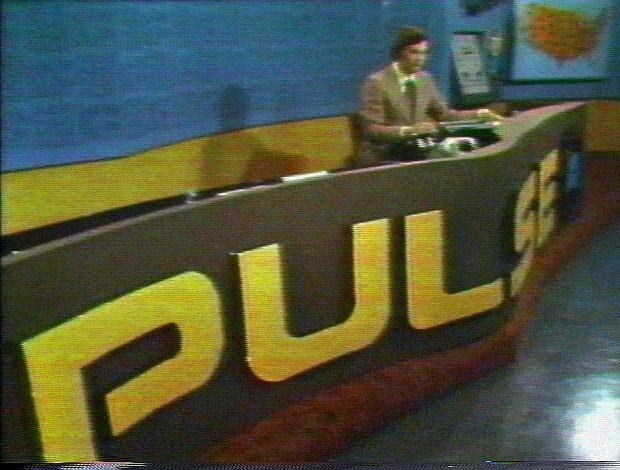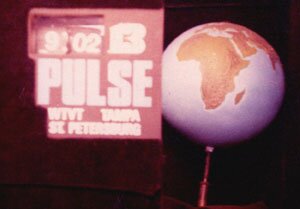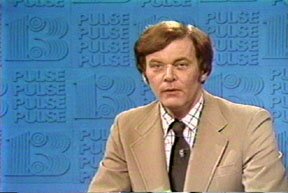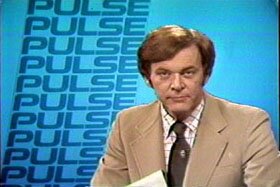FROM BLACK AND WHITE TO COLOR
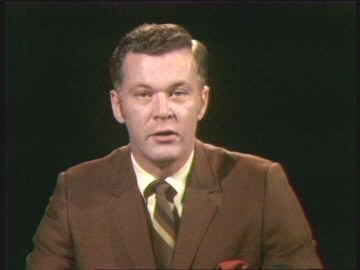
Hugh Smith, News Director and
Anchor from the 60's to the 90's
Hugh Smith, the most high-profile WTVT newsman for three decades, joined the station as an anchor on September 2, 1963. Smith became news director in 1968 and anchored Pulse News news until 1991. Smith's on-air persona echoed that of his CBS news counterparts...no kidding around...get the story straight...and provide context so that Mr. and Mrs. Viewing Public understood the relevance of the story to their own lives. With a 5,000 square mile coverage area, Smith and his news team could always be counted on to be first and best.
Tampa Bay viewers always tuned to Channel 13 first for breaking news
"Big 13" conducted an interview with Hugh Smith regarding his tenure at Channel 13. Click here to read "Hugh Smith: A View From the Anchor Desk"
In addition to being a staff announcer on Big 13, Jerry Krumbholz also anchored a 5-minute Pulse newscast Saturdays at 6.45 am. This was followed by a pre-recorded 'Florida Fishing with Salty Sol', and Pulse Weather with Bill Kowal. Ray Blush was also a frequent substitute Pulse Anchor.
Color Communications Center (1966)
When Channel 13 added local live and film color to its programming in 1966, the news segments were moved from a plain desk and wall in Studio A back to the newsroom, located towards the front of the building. A fiberglass TV-shaped screen was placed over the window connecting Studio B to the newsroom, allowing the color camera to shoot the anchor against a light-blue background fronted by a plastic-relief world map.
Color Communications Center (1966).
News Director Ray Dantzler with Assistant News Director Hugh Smith
At the start of the 1970's, Pulse news would return to Studio A with a modern, free-form set. The set ran about the entire length of studio A, with only 3 feet of room left for technicians to walk between the director's control room and master control. Behind the the news set was a wall that separated studio A from master control. Somewhere in this wall is the small serving window left over from the building's early days as a restaurant.
WTVT'S EARLY TO LATE-70'S SET (Circa 1974)
A sleek new set for the 1970s. Located in Studio A, the Pulse News set featured separate desks for sports (LEFT), an interview area (ORANGE CHAIRS), the anchor desk, and weather. Roy Leep's radar viewing station and controls can be seen to left of the old fashioned printed maps. At the far right, floorman Richard Bozeman keeps track of studio activities. The blue background is actually vacuum-formed plastic panels that repeat the word "Pulse 13". By the mid 70's, the two desks were joined together and covered by a thick layer of plaster. Repainted brown with large yellow "Pulse" letters, it resembled the front of a large ship. (See Below)
Ship Ahoy!! H.M.S. Pulse sails into Studio A.
Besides the plaster covering with yellow Styrofoam letters, the background border was changed from off-white to yellow.Maybe color TV wasn't such a great idea...
Three cameras were used to cover a news cast, with a fourth camera in Studio B shooting the Pulse I.D. and miniature globe, or visuals when Chroma Key was used to combine the anchor with a graphic background.
Here's the PULSE logo that viewers saw on their home TV sets...
...and what the miniature globe and digital clock looked like
in Studio B, where it was shot by Camera 4.
In 1975, a new high-energy PULSE open was created by
director Paul Koenig.
Preparations for a 1980 newscast.
Pinellas bureau chief Tim Smith is at left;
Reporter/Anchor Ray Blush is at right
Smith's team in the 1970's included 11pm anchors Paul Hoffman, Rod Challenger, John Nicholson, and Jim West. Reporting from the field were Bob Fellows (often assisted by Bob Walker and Walter "Flash" Jarocki), stringer Tony Zappone, reporter/anchors Scott Shuster, Lesley Schissell (WTVT's first female anchor), Deanna Lawrence, Larry Elliston, Neil Vacino, and Frank Ahern. In the late 70's, John Ferrugia was on the Tampa beat, while the Clearwater bureau chief was Tim Smith (no relation to Hugh). Tim was noted for his comprehensive Pinellas and Polk county coverage.

Chip Collins manned the always busy assignment desk, and editorials were delivered by Ray Dantzler.
|
|
|
At left, we see the vacuum-formed plastic Pulse background.
It's painted a certain shade of blue to allow a Chroma Key effect, as seen on the right. This is a textbook example of news oriented special effects, which allows any image to be placed behind the anchor.

